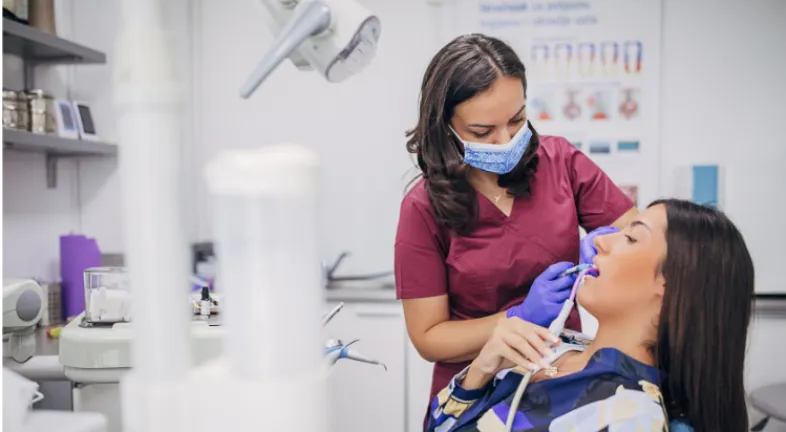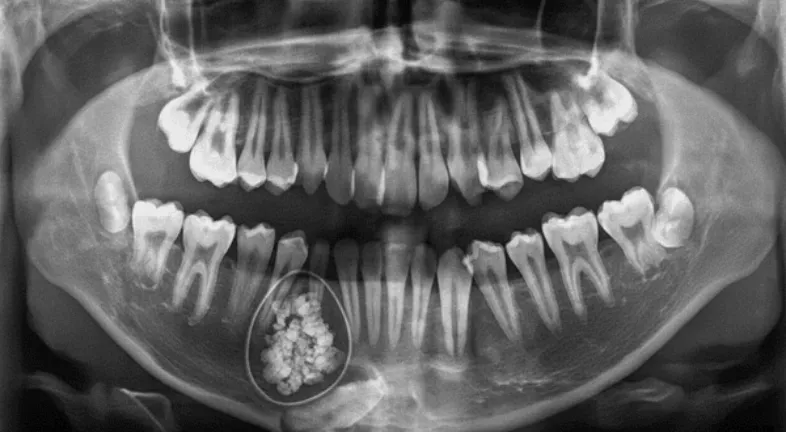
When it comes to teeth straightening, braces and retainers are essential tools. While they may seem similar, they serve entirely different purposes in orthodontic treatment. Braces work to move misaligned teeth, while retainers maintain the position of teeth after treatment is complete.
If you’re unsure about the differences between braces and retainers, this blog will help you understand. We’ll explore how each appliance works when they are needed and the key differences that set them apart. By the end, you’ll know exactly how braces and retainers support your smile journey.

Braces are orthodontic devices used to shift teeth into proper alignment. They apply steady, gentle pressure to move teeth over time, improving issues like crooked teeth, overbites, underbites, and jaw misalignment. Braces are worn for an extended period, usually ranging from 12 to 24 months, depending on the complexity of the case. There are different types of braces to suit individual needs, such as:
Braces are suitable for both children and adults. While children typically wear braces during their teenage years, more adults are now seeking orthodontic treatment for cosmetic and health reasons. Braces work continuously and require regular orthodontic checkups to ensure proper progress.
Braces work by placing continuous pressure on the teeth, encouraging them to move into a straighter position. The brackets, wires, and rubber bands all work together to achieve this movement.
Here’s how each part of the braces system works:Each orthodontic visit involves adjustments to the wires and bands, ensuring the right amount of pressure is applied. This process may cause slight discomfort, but it is necessary to achieve the desired results.
Once orthodontic treatment with braces or clear aligners is complete, retainers are used to keep the teeth in their new position. Without retainers, teeth naturally shift back to their original alignment, undoing all the hard work of orthodontic treatment.
Retainers are custom-made to fit the newly achieved alignment of your teeth. They are typically worn after the braces come off or after the final set of clear aligners. Unlike braces, retainers do not shift teeth. Instead, they "retain" the progress made during treatment.
There are two main types of retainers:The type of retainer you receive depends on your specific orthodontic needs. Your orthodontist will decide which type of retainer is best for you.
Retainers keep teeth from shifting after orthodontic treatment. When braces or aligners are removed, the surrounding tissues and bones are still adjusting. Retainers maintain the new alignment while the teeth stabilize in their new positions.
Here’s how retainers work:
To be sure that the retainer works effectively, you must follow the wear schedule provided by your orthodontist. Skipping wear time could cause the teeth to shift, which may require additional treatment.
While both braces and retainers play a role in teeth straightening, they serve different purposes. Braces work to align the teeth, while retainers maintain that alignment once treatment is complete. Below is a simple comparison table highlighting the key differences.
| Feature | Braces | Retainers |
|---|---|---|
| Primary Purpose | Move teeth into alignment | Hold teeth in position |
| Treatment Phase | Worn during treatment | Worn after treatment |
| Wear Duration | 12-24 months (varies) | Lifetime maintenance |
| Design | Brackets, wires, rubber bands | Clear or wire-based devices |
| Removable? | No (except for aligners) | Yes (removable) or fixed |
This table clearly shows that braces and retainers have different roles, but both are essential in the overall orthodontic process:

Braces and retainers are not opposing treatments. Instead, they work together as part of a complete orthodontic process. Braces move your teeth into alignment, while retainers hold them in place after treatment. Without a retainer, all the progress made with braces could be lost.
When braces are removed, your teeth are still at risk of shifting back to their original positions. This is because the gums, ligaments, and bones around the teeth need time to adapt to the new alignment. Retainers provide the support needed for your teeth to stay in place as the surrounding tissues stabilize.
Here’s a simple step-by-step process of how braces and retainers work together:This process ensures that the results of orthodontic treatment are permanent. People who don’t wear their retainers as instructed often experience teeth shifting, which may require re-treatment.
To get the best results from orthodontic treatment, it’s essential to maintain and care for both braces and retainers properly. Each device requires a different approach when it comes to cleaning, handling, and preventing damage.
Braces require daily maintenance to prevent plaque buildup, cavities, and gum disease. Since brackets and wires create small spaces where food can get stuck, brushing and flossing are essential. Here’s how to care for braces:
Maintaining good oral hygiene while wearing braces prevents cavities and reduces the risk of complications. Regular brushing, flossing, and dental checkups are essential throughout the treatment.

Retainers are much easier to care for than braces, but they still require attention. Since retainers are worn after braces, it’s important to keep them clean to avoid bad breath, plaque buildup, and bacterial growth. Here’s how to care for retainers:
By taking care of retainers properly, you reduce the risk of breakage and avoid needing a replacement. Consistent cleaning keeps your retainer fresh and free from odor-causing bacteria.
The cost of orthodontic treatment varies depending on the type of braces or retainers you need. Braces are more expensive because they require longer treatment times, regular checkups, and adjustments. Retainers, on the other hand, are more affordable and are only needed after the braces are removed.
Here’s a breakdown of the cost differences:
| Type | Average Cost | Factors That Affect Cost |
|---|---|---|
| Braces | $3,000 - $7,000 | Type of braces, duration of treatment |
| Retainers | $100 - $500 per retainer | Type of retainer (fixed or removable) |
Braces require regular orthodontic visits, custom materials, and ongoing adjustments. Each visit ensures that the teeth continue to shift into alignment. Metal braces tend to be more affordable, while clear or ceramic braces cost more due to their discreet appearance.
Retainers are cheaper because they are only used to maintain alignment after treatment. Unlike braces, retainers don’t need regular adjustments. However, if you lose or damage a retainer, you may need to purchase a replacement.
If you’re deciding between braces and retainers, the decision depends on where you are in your orthodontic journey. Here’s a simple breakdown to help you understand which option is right for you.
In most cases, you’ll need both. Braces are used to shift teeth, while retainers ensure the teeth stay in place. If you want to maintain the results of your orthodontic treatment, wearing a retainer is essential.
Braces and retainers are two essential tools in the process of teeth straightening. Braces move teeth into position, while retainers maintain the results. Without a retainer, your teeth are likely to shift back to their previous alignment.
Both appliances play a vital role in achieving a long-lasting, straight smile. Braces may seem like the main part of the process, but retainers are equally important for maintaining your results. If you follow your orthodontist’s instructions and wear your retainer as advised, you can enjoy a straight, confident smile for life.




Curated the best for your knowledge
.webp) Tooth Resorption: Causes, Symptoms, and Treatment Options
Tooth Resorption: Causes, Symptoms, and Treatment OptionsTooth resorption often goes unnoticed until real damage appears. Many people discover it during a routine dental visit and feel a wave of fear, wondering how such a hidden process could silently weaken their smile. The truth is that tooth resorption is more common than most expect, and early detection can make all the difference. By understanding why it happens, how it progresses, and which treatments actually work, you can protect your teeth with confidence. You don’t have to feel overwhelmed. When you know what to look for, you stay one step ahead and safeguard your long-term oral health.
Read More Teeth Troubles Explained: Causes, Symptoms & Fixes
Teeth Troubles Explained: Causes, Symptoms & Fixes Teeth problems happen when we take our pearly whites for granted. When our smile is nice and healthy, we don’t think much about it. And the moment things go south, we panic. Saving, or remaking, that smile becomes a priority. For some, though, the issues are present right from the start. Misalignment, bite issues, and teeth troubles that are more “structural” in nature. They don’t happen due to neglect; rather, they are given by luck, God, nature, whatever you believe in. That being said, no matter the type of tooth trouble, there’s a solution out there. And we’re exploring all that today, teeth diseases and treatment, one by one.
Read More Odontomas: What They Are and How They're Treated
Odontomas: What They Are and How They're TreatedSome dental conditions are quiet. Too quiet, in fact. Odontomas fall into that category. They rarely make noise, yet they change things beneath the surface. And people usually have no idea about them. While malocclusions, teeth shifting, discoloration, or other cosmetic dental issues are fairly well known, odontomas are not. So, an odontoma is technically a type of tooth tumor. It’s benign, harmless, but oddly structured. Hence, it can interfere with tooth eruption, displace teeth, or cause swelling. However, there’s more to it. Here’s a deeper dive.
Read MoreQuick Links

Heading